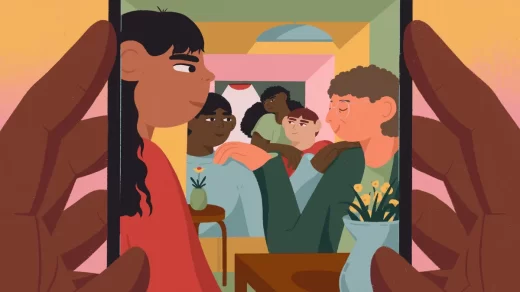
The language of digital communication is changing over time, especially in this last decade, in which many “accessories” have been created so as to make digital spaces even more interesting. Through digital media, people can discover something new every day, something that costantly attracts their attention and that they can use with the possibility to express, or better ‘represent’, their own feelings, sensations, attitudes, thoughts. Emoji are not the only form of digital expression, there is some more. For istance, the well-known animated images called GIF(s). The Technopedia website gives the following defination of an animated GIF: “is an image encoded in graphics interchange format (GIF), which contains a number of images or frames in a single file and is described by its own graphic control extension. The frames are presented in a specific order in order to convey animation. An animated GIF can loop endlessly or stop after a few sequences.”
They were firstly introduced in 1987 by Steve Wilhite as an innovative way of presenting moving images and today they are still relevant in web terms. The majority of web users like and share these images/frames, which are also widely used in chats. They are a quick and easy way to explain a message by showing dynamic contents. There is an online database and search engine, called GIPHY, where people can find GIFs for any occasion. These GIFs are indeed divided into different categories, such as animals, holidays, food&drinks, memes and so on. The GIPHY developers have created numerous GIF files and archived all of them into a big GIF library, which is considered the largest in the world. These digital funny images and short animations are seen as ‘great’ and ‘powerful’ because of their capacity to be short and direct.
The effectiveness of these images could be a result of the fact that besides being easily consumed they can actually help to enhance a message through colourful and dynamic visual content. They cannot be made just by images but also by short clips recorded from films, cartoons, TV series or public episodes. The use of GIF is increasing and you can literally find them everywhere on social media. Many Facebook pages or groups, for example, share GIFs in order to create more efficient and even ironic posts. It is probably the irony in the message contained into these GIFs that makes them so attractive and famous. It goes without saying that these animated images are often used as a funny joke or a silly parody of someone or something. Therefore, they have a narrative value too. They can be seen as a form of storytelling, which engages with the audience on the web. Social platforms are open to the GIF technology because the content that GIF images contain is simple and fun, with the power to reach a great number of recepients.
Finally, there is a debate about the correct pronunciation of the word GIF (or JIF?), some pronounce it with a soft ‘G’, others with a hard ‘G’. Anyway, the GIF’s creator Steve Wilhite has clarified that it should be pronunced with a soft ‘G’ (Jif).
References



Recent Comments